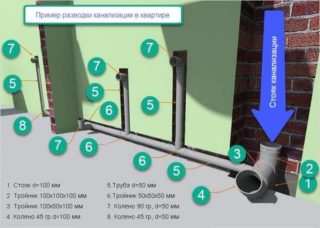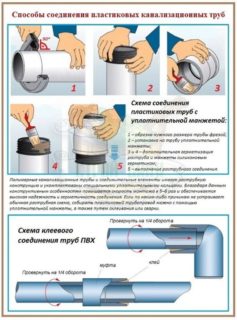For internal sewerage, cast iron and plastic pipes are used. In apartment buildings, heavy metal products were previously installed, but gradually builders switched to polymers, since many of their positive qualities are able to compete with metal.
Types of plastic pipes for internal sewerage
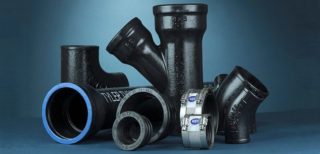
In order to choose the right material for an internal sewerage or water supply system, you need to know the characteristics of how a particular material reacts to an aggressive environment, high and low temperatures, and the pressure in the system.
Cast iron products are known for their strength and durability. Service life is about 80 years. Much depends on the composition of the liquid that flows inside, but the material is considered chemically inert, that is, it does not lend itself to action and does not change its characteristics in an acidic or alkaline environment. At the moment, the industry produces several types of cast iron, which makes it possible to choose in terms of price and quality.
It is still believed that the inner walls of cast-iron pipes are rough and during operation organic matter adheres to them, plugs are created. But this drawback was corrected long ago, now the inner surface is as smooth as that of polymer products. The walls are able to withstand pressure and not deform from temperatures. The metal is also appreciated for its good soundproofing properties. Of the minuses - a lot of weight and problems with self-assembly, as well as the need to perform welding on straight sections.
Polymeric materials are much easier to install and have a long service life. In internal systems, several types of pipes are used, depending on the connection point.
Polypropylene
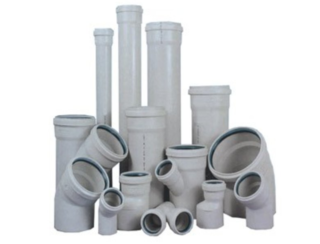
The material is more suitable for transporting cold liquids, but can withstand hot drains for a short time. Considering that washing machines and dishwashers drain hot water at a temperature of about 70 degrees, polypropylene can be used for inter-house wiring. White pipes for internal sewerage are a good solution if they are not embedded in the wall. They look aesthetically pleasing and do not change color over time.
Due to its chemical inertness, the internal structure of polypropylene does not deform, which is important if acid-based chemical pipe cleaning agents are used in the kitchen or bathroom.
The material is lightweight, which makes it one of the most popular. Parts of the internal sewerage system are easy to assemble and assemble. Together with pipes, you can buy couplings and fittings of various configurations.
Prolonged exposure to hot liquid can render polypropylene pipes unusable.
Polyethylene
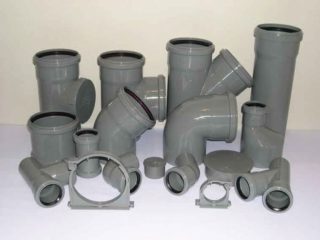
Among plastic pipes for internal sewerage, a large selection is provided by manufacturers of polyethylene products. There are several brands of this material with different technical characteristics. You can choose any one based on your needs - for hot or cold water supply, sewage, pressure or non-pressure systems.
Among the HDPE brands, cross-linked polyethylene stands out, the resistance of which to high temperatures is 30 degrees higher than usual.Such material is used for external and internal sewerage and water supply systems, since it does not react to ultraviolet radiation and environmental factors - frost and heat. In addition, it does not absorb water and is mechanically durable.
Polyvinyl chloride
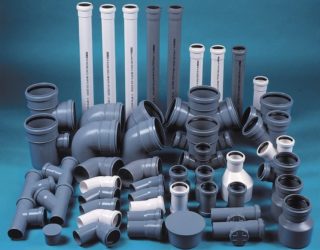
This material is recognized as the leader for internal sewer distribution:
- It can be easily mounted and dismantled if necessary.
- Affordable cost and value for money.
- Absolutely smooth inner surface, which does not adhere to minerals and organics.
- Resistance to mechanical damage.
- Chemically does not interact with aggressive substances of sewage.
Cons:
- The weak point is hot water. The material is resistant to a temperature range from - 15 to + 65 degrees. It can withstand +95 degrees for a short time. It becomes brittle when exposed to high temperatures.
- At temperatures below 15 degrees, insulation is required.
There is practically no soundproofing. If this parameter is important, it is recommended to use appropriate pipe wrapping materials.
Distinguish between pressure and non-pressure PVC products, as well as corrugated reinforced structures, which are often used in outdoor systems for laying in the ground under the roadway. The wall thickness of gravity pipes is less; they are used in autonomous gravity systems.
For internal wiring, pipes with a diameter of 50 and 75 mm are used. The exception is the toilet bend, for which it is recommended to use 110 mm. As the diameter increases, the wall thickness increases.
The main criteria for the selection of pipes
When arranging a bath or sauna, you need to keep in mind that the bulk of the drains there will have a high temperature. Most owners do not take risks and put cast iron, which tolerates temperature extremes well. Hot water contains iron oxides and carbonates, these substances, over time, are able to settle on the walls of cast iron and close the lumen. It may be worth buying a more expensive polymer, such as cross-linked polyethylene, which is not afraid of high temperatures.
The connection method also plays a role. For internal wiring, masters prefer bell-shaped. Plastic can also be cold welded, but this requires skills and tools.
Another condition is the correct choice of diameter. In order for the system to work smoothly, it is recommended that the size ratio between internal and external wiring be observed.
Installation features
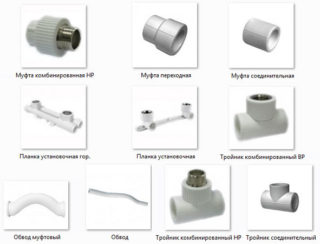
The internal system is connected into a single whole using fittings of different configurations:
- knee - for turns and in places where the diameter changes;
- reduction - serves to connect pipes of different sections;
- tee - necessary for branching the system, there are tees with different angles of connection;
- crosspiece - serves to connect 4 pipes into a single wiring.
To connect pipes without a socket, couplings are used, which also have different inlet and outlet diameters. There are special transition elements with which the old cast-iron pipe is connected to the inner plastic one.
The most well-proven plastic pipes Sinikon (SINIKON). This is a joint Russian-Italian production facility that manufactures products according to the standards in force in Russia. The entire line of pipes and fittings is presented. At the moment, the company is the leader in terms of price / quality ratio.
Advantages and disadvantages of plastic pipes for domestic sewage
- They are easy to assemble with your own hands, without having experience in such work. No additional tools required.
- Tightness is guaranteed by the use of gaskets.
- Thanks to the smooth inner surface, the flow rate does not decrease, and organic particles do not have time to stick to the walls.
- Almost all polymers are chemically inert and do not change their properties when exposed to acids and alkaline elements.
- Large selection of sizes.
Cons:
- low level of sound absorption;
- with an increase or decrease in the temperature threshold, they lose strength.
After a detailed study of the characteristics of polymeric materials, it is recommended to clarify the properties of products upon purchase, since the industry is constantly releasing new modifications.
Pipe cost
The price of products made of polymeric materials is an order of magnitude lower than that of cast iron. Despite this, some owners of private houses and cottages prefer the old method. If the budget allows, cast iron will do the job well.
For more economical solutions for internal wiring, any type of plastic is used. Prices for PVC pipes for internal sewerage depend on the diameter of the products and their length. Stores offer discounts on fittings or shipping when ordering in bulk.

